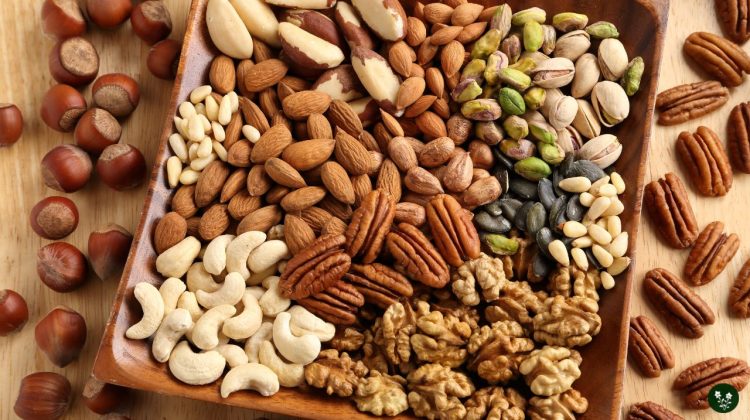
Nuts are a nutritious and versatile food enjoyed by many cultures around the world.
They are not only a delicious snack, but also a valuable source of essential vitamins, minerals, and healthy fats.
With more than 20 different types of edible nuts available, such as almonds, walnuts, pecans, cashews, and hazelnuts, there is a vast array of flavors and textures to explore.
Historically, nuts have played an important role in human diets, with records showing their use as a staple food as early as 6000 BC, like in the case of acorns.
In modern times, nuts are consumed in various forms – as ingredients in sweet and savory dishes, as toppings on salads, or enjoyed simply as a snack.
The health benefits they provide, when consumed as part of a nutrient-dense diet, have been well-documented, making them an excellent addition to a balanced lifestyle.
As you embark on a journey to discover the different types of nuts, you will encounter familiar favorites such as pistachios, macadamia nuts, and Brazil nuts, as well as lesser-known varieties like saba nuts, paradise nuts, and pili.
Each nut possesses its unique nutritional profile, flavor, and culinary uses, offering exciting opportunities to diversify your meals and enrich your diet with their health benefits.
In this article, we'll cover
1. Health Benefits of Nuts
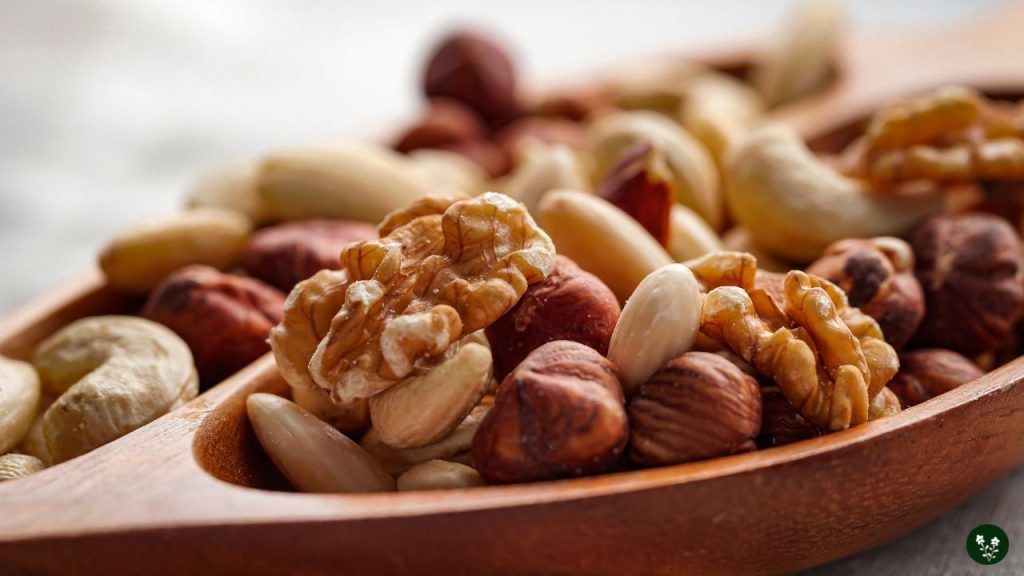
Nuts are known for their numerous health benefits, making them a popular choice among health-conscious individuals.
They are a great source of essential nutrients such as protein, healthy fats, fiber, vitamins, and minerals.
One of the most significant benefits of nuts is their ability to improve heart health.
This is due to their high content of monounsaturated and polyunsaturated fats, which help lower bad cholesterol levels and promote overall artery health.
Furthermore, nuts have been linked to a decreased risk of blood clots, reduced inflammation related to heart disease, and better regulation of body weight.
Each type of nut offers its unique health benefits:
- Almonds: Rich in vitamin E, magnesium, and potassium, almonds can help lower blood pressure and maintain healthy cholesterol levels.
- Walnuts: High in omega-3 fatty acids, walnuts may improve brain function and reduce inflammation.
- Pistachios: Often considered the healthiest nut, pistachios are packed with antioxidants and may help lower blood sugar levels.
- Cashews: A good source of essential minerals like copper and zinc, cashews can support immune health and improve bone strength.
In addition to these benefits, nuts can also help regulate blood sugar levels, improve gut health, and support weight management.
Incorporating a variety of nuts into your diet can provide a wide range of essential nutrients and health benefits.
2. Nut Allergies and Risks

Nut allergies are quite common and can be triggered by different types of nuts, including peanuts, tree nuts like almonds, cashews, and pecans, and others.
To clarify, peanuts are part of the legume family, while tree nuts include a variety of seeds like almonds, Brazil nuts, cashews, hazelnuts, pecans, pistachios, and walnuts.
Allergic reactions can occur due to direct consumption of the nuts, cross-contamination during food processing or preparation, and even through skin contact or inhalation, depending on the sensitivity of the person with the nut allergy.
Severity of reactions can range from mild to life-threatening, such as anaphylaxis.
Symptoms of an allergic reaction include itching, hives, swelling, difficulty breathing, abdominal pain, and dizziness, sometimes progressing rapidly to more severe symptoms like vomiting, diarrhea, chest pain, and difficulty swallowing.
Some people may be allergic to only one type of nut, while others might be sensitive to multiple types of nuts.
It is especially important for individuals with a nut allergy to read food labels, inquire about ingredients when dining out, and even carry an epinephrine auto-injector if they have a history of severe reactions.
Reducing the risk of cross-contamination among different nuts is essential when handling and preparing food.
For example, eating nuts from their shells can help minimize the potential exposure to other types of nuts.
Increased awareness and preventive measures can significantly lower the risk of allergic reactions and improve the quality of life for those with nut allergies.
3. Common Types of Nuts
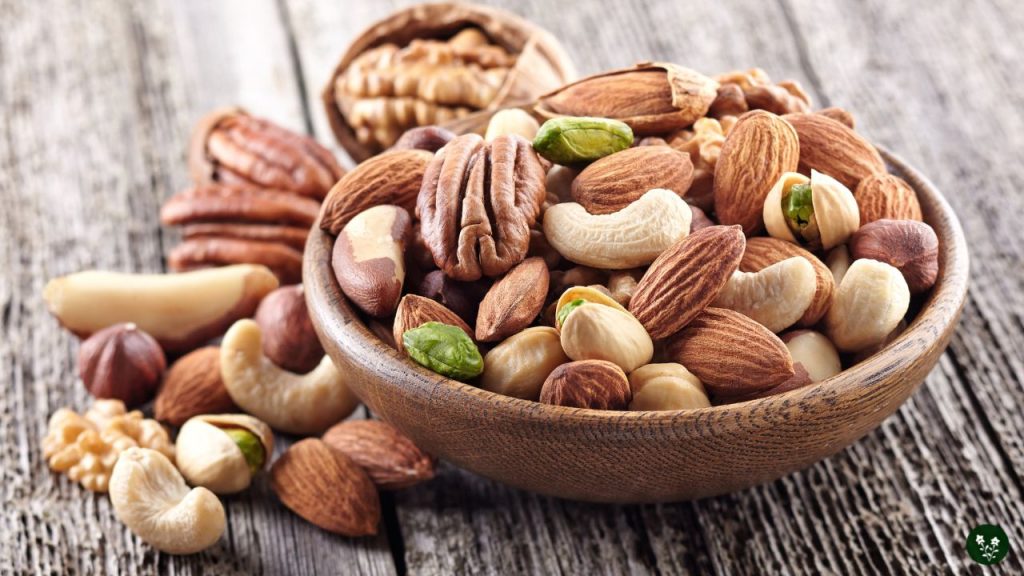
Nuts are a popular and nutritious food choice, enjoyed around the world for their taste and health benefits.
In this section, we’ll explore some common types of nuts, their characteristics, and some ways to enjoy them.
Almonds
Almonds are oval-shaped nuts with a slightly sweet, mild flavor. They can be eaten raw, roasted, or used in a variety of dishes such as desserts or salads.
Cashews
Cashews have a rich, buttery taste and a creamy texture. They are commonly consumed on their own or used in cooking, particularly in Indian or Asian cuisine.
Walnuts
Walnuts are large, wrinkled nuts with a slightly bitter flavor. They can be eaten raw or roasted, and are often used in baked goods, salads, or as a topping for oatmeal.
Peanuts
Despite being classified as legumes, peanuts are commonly included in the nut category. They have a distinctive, earthy flavor and are used in a variety of dishes like peanut butter, snacks, and desserts.
Pistachios
Pistachios have a unique, slightly sweet flavor and a vibrant green color. They can be eaten on their own, incorporated into desserts or savory dishes, or used as a garnish.
Hazelnuts
Also known as filberts, hazelnuts have a rich, nutty taste that pairs well with chocolate. They can be found in many desserts and baked goods, as well as eaten on their own or added to salads and other dishes.
Pecans
Pecans have a buttery, slightly sweet flavor and are an essential ingredient in many Southern dishes. They are commonly used in sweet and savory recipes such as pies, salads, and snacks.
Macadamia Nuts
Native to Australia, macadamia nuts are known for their creamy texture and rich, buttery taste. They can be enjoyed on their own, added to baked goods or savory dishes, or used to make nut butter.
4. Less Common Types of Nuts
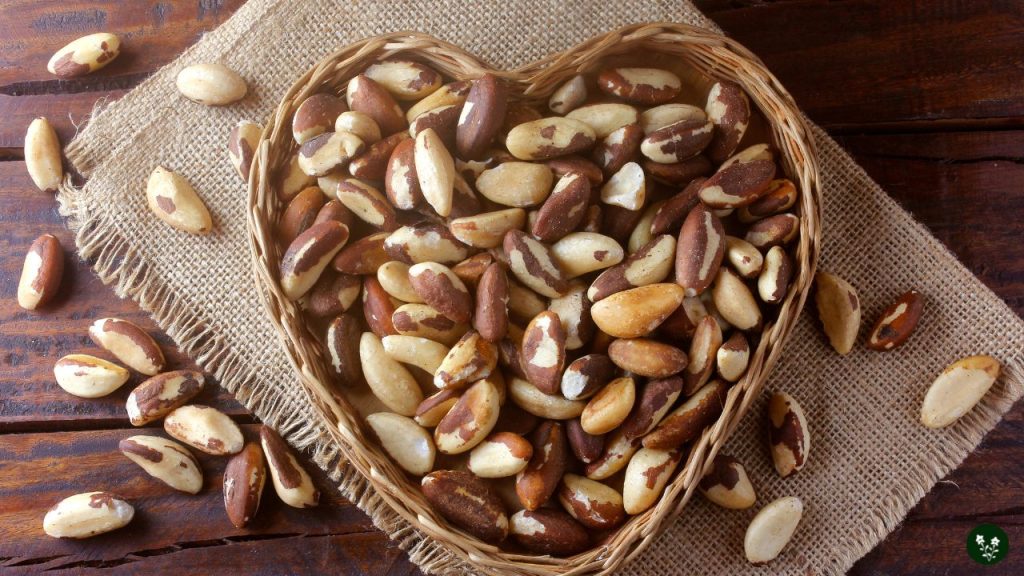
Brazil Nuts
Brazil nuts are large, triangular seeds native to South America. They grow in large clusters inside a hard, coconut-like shell, usually harvested from the Brazil nut tree (Bertholletia excelsa).
Rich in selenium, Brazil nuts can help with thyroid function and maintain a healthy immune system.
However, moderation is essential as excessive selenium can lead to health problems. Brazil nuts are also a good source of healthy fats and protein.
Pine Nuts
Pine nuts are small, soft, elongated seeds found inside the cones of certain pine trees.
They have a delicate flavor and buttery texture, making them an excellent ingredient for pesto and other dishes.
High in vitamins E and K, magnesium, and healthy fats, pine nuts can help support cardiovascular health and provide antioxidant benefits.
Due to their labor-intensive harvesting process, pine nuts are often expensive compared to other types of nuts.
Chestnuts
Chestnuts are distinct from other types of nuts because of their high carbohydrate and low fat content.
They have a starchy, sweet flavor and grow inside spiky pods on chestnut trees. Chestnuts can be eaten raw, roasted, or used in various recipes, such as stuffing or chestnut flour.
They provide essential nutrients like vitamin C, B vitamins, and minerals like potassium and manganese.
Tiger Nuts
Despite their name, tiger nuts are not actually nuts but tubers of the Cyperus esculentus plant, native to Africa and the Mediterranean region.
They have a unique, sweet taste with a hint of coconut and almond.
Tiger nuts are rich in soluble fiber, resistant starch, and vitamins E and C, making them a nutritious and versatile addition to various dishes.
Tiger nuts can be consumed raw, roasted, or used as tiger nut milk or flour.
5. Nut Storage and Handling
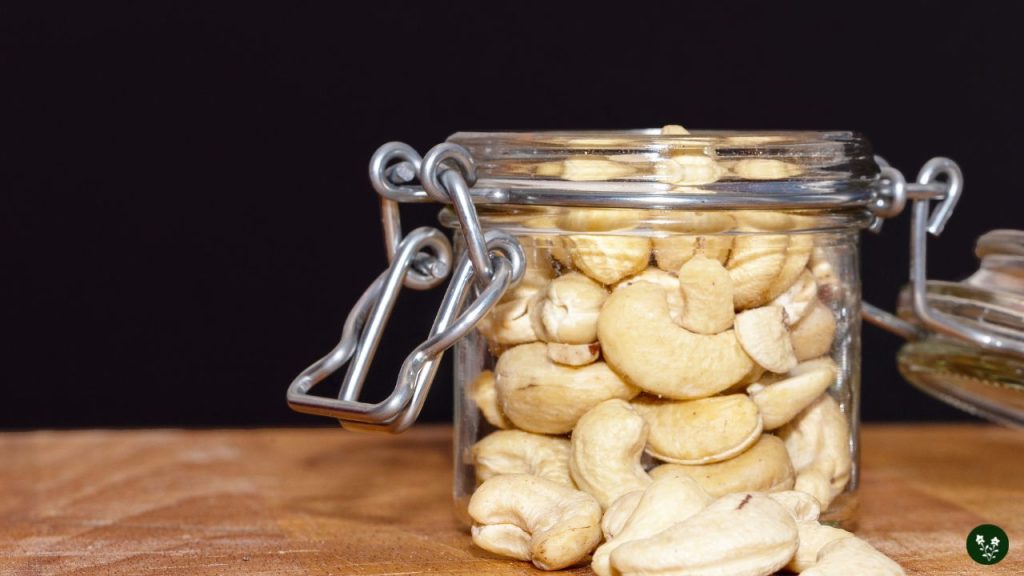
Proper storage and handling of nuts can significantly extend their shelf life and ensure they maintain their nutritional value and freshness.
There are various methods available for preserving nuts, but using appropriate storage containers and maintaining proper storage conditions are essential.
One effective way to store nuts is in air-tight glass jars in the refrigerator.
In addition, you can keep excess nuts in their original bags or in freezer-safe, air-tight containers in the freezer.
Refrigeration can preserve nuts for up to six months, while freezing extends their life to a year or longer.
Before storing your nuts, consider labeling the containers with the date they were put into storage to help track their freshness.
Upon opening a bag or a jar, transfer any unused nuts back into proper storage as soon as possible to prevent spoilage.
To maintain the quality of your nuts during storage, try to limit their exposure to heat, light, and moisture.
For instance, when using nuts as ingredients in your dishes, measure out the required amount and quickly return the remaining nuts to their storage containers.
Lastly, if you notice that your nuts have begun to taste stale or lose their natural oils, it is still possible to revive them by toasting them in a 350°F oven for a few minutes to bring back their original flavor.
6. Cooking with Nuts

Incorporating nuts into your cooking can add a delicious crunch and a burst of flavor to various dishes.
Each type of nut has its unique taste and texture, making them versatile ingredients in both savory and sweet recipes.
Roasting nuts enhances their flavor and gives them a crispy texture.
To roast nuts, preheat your oven to 300°F, place the nuts in a single layer on a baking sheet, and bake them for approximately 7 to 10 minutes until they become golden brown and aromatic.
Here are some popular types of nuts and how they can be used in cooking:
- Almonds: Ground almonds can be used as a base for macarons, pie crusts, or as a flour substitute in gluten-free baking. They can also be used as a garnish for salads, oatmeal, and yogurt.
- Cashews: These nuts are commonly used in stir-fries, curries, and as a base for vegan cheese sauces. When ground, they can also be added to smoothies for extra creaminess.
- Pecans: Ideal for desserts, these nuts can be used to make pecan pie, pralines, and granola. They can also be a delicious topping for roasted vegetables or mixed into salads.
- Walnuts: Rich in omega-3 fatty acids, walnuts can be added to pasta dishes, desserts, and breakfast items like muffins and pancakes. They also make a crunchy topping for salads and roasted vegetables.
- Pine nuts: Popular in Mediterranean and Middle Eastern cuisine, these nuts can be used in pesto, salads, and rice dishes. You can also toast them lightly and add them to pasta or grain bowls for extra crunch.
Remember to store nuts in a cool, dry place or in the refrigerator to extend their freshness.
Nuts can quickly become rancid due to their high oil content, so it’s essential to store them properly and use them within a few months of purchase.
Conclusion
In this article, we have explored various types of nuts and their characteristics.
Nuts are a valuable addition to any diet due to their nutritional content and potential health benefits.
Popular types of nuts include almonds, Brazil nuts, cashews, and pistachios, each offering specific benefits and unique flavors.
Regular nut consumption has been linked to reduced risk of type 2 diabetes, cardiovascular disease, and all-cause mortality in numerous studies.
Incorporating nuts into one’s diet can provide essential nutrients, such as unsaturated fats, protein, fiber, and vitamins.
When selecting nuts to include in your diet, it is important to be mindful of their caloric content, as overconsumption can lead to unwanted weight gain.
Additionally, those with allergies should exercise caution, as some nuts contain seed storage proteins that may trigger reactions.
Incorporating a variety of nuts in a well-balanced diet can contribute to overall health and well-being.
Their versatility makes it easy to add them to snacks, meals, or as a garnish to enhance the flavor and nutritional value of dishes.
Leave a Reply